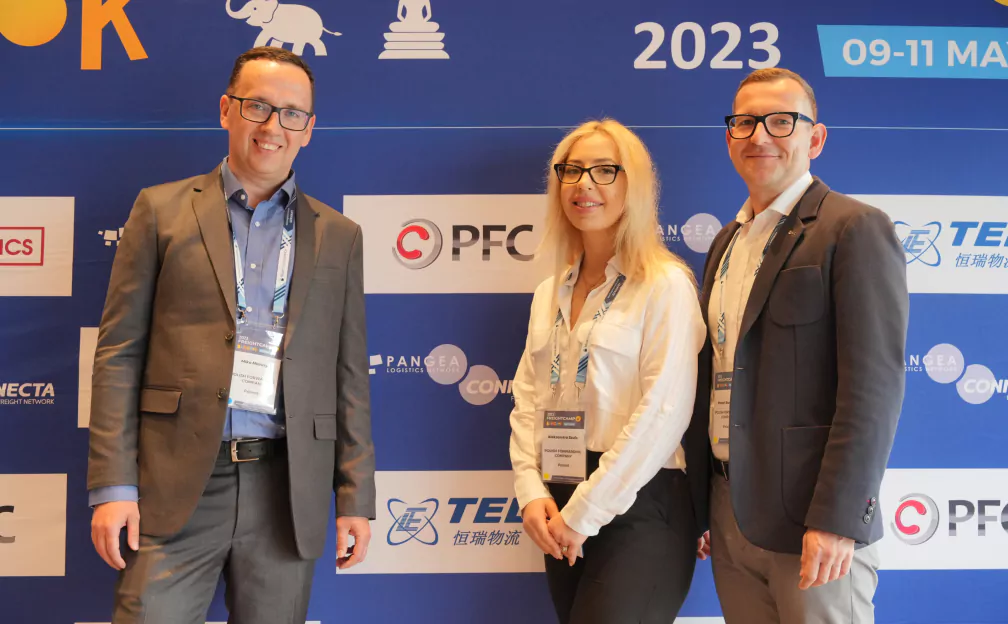 Peru stands as one of the leading nations in the global mining industry, with copper being its most significant export. For freight forwarding companies, logistics providers, importers, exporters, customs brokers, manufacturers, and others in the logistics and supply chain ecosystem, understanding the copper trade in Peru is essential for optimizing business operations. This metal has a substantial impact on Peru’s economy, and its relevance spans industries such as electronics, construction, and transportation.
Peru stands as one of the leading nations in the global mining industry, with copper being its most significant export. For freight forwarding companies, logistics providers, importers, exporters, customs brokers, manufacturers, and others in the logistics and supply chain ecosystem, understanding the copper trade in Peru is essential for optimizing business operations. This metal has a substantial impact on Peru’s economy, and its relevance spans industries such as electronics, construction, and transportation.
In this blog post, we’ll delve into the significance of copper exports from Peru, examining the factors that make it a key commodity, how the logistics infrastructure supports this trade, and what businesses involved in the logistics of copper should consider when engaging with Peru’s copper industry.
Overview of Peru’s Copper Industry
Peru is the second-largest copper producer globally, trailing only Chile, its southern neighbor. In 2023, Peru accounted for approximately 12% of the world’s total copper production, exporting more than 2.5 million metric tons annually. The country’s copper exports are vital to its economic health, contributing significantly to the national GDP and employment.
Peru’s mining sector has been expanding rapidly over the last few decades, with copper playing a central role. Large-scale mines like the Cerro Verde Mine, Antamina, and Las Bambas produce most of the copper. Mining companies such as Southern Copper Corporation, MMG Limited, and Freeport-McMoRan are key players, leveraging Peru’s rich geological resources.
Key Production Areas
Peru’s copper reserves are primarily concentrated in three regions:
- Arequipa: Home to Cerro Verde, one of the largest copper mines globally.
- Ancash: Location of the Antamina mine, also known for producing zinc.
- Apurímac: Hosting Las Bambas, a relatively newer, but highly productive, copper mine.
Given these large production centers, the logistics chain surrounding copper mining is extensive and complex. For freight forwarders and customs brokers, these regions represent hubs of activity, with specialized needs for transportation, storage, and shipping.
Key Factors Driving Copper Production in Peru
Several factors contribute to the dominance of copper production in Peru.
1. Geological Wealth
Peru has some of the most copper-rich deposits in the world. These deposits often coexist with other valuable minerals like gold, silver, and molybdenum, making mining operations more profitable and attractive to international investors.
 2. Government Support and Investment Incentives
2. Government Support and Investment Incentives
Peru’s government actively supports mining through favorable tax structures, policies promoting foreign investment, and mining-friendly regulations. Free trade agreements with countries like the United States, China, and the European Union further enhance the appeal of Peru as a major player in the global copper market.
3. Infrastructure and Mining Expertise
With decades of mining history, Peru has developed a robust infrastructure tailored for copper production and exportation. From high-capacity processing plants to efficient port systems, the country’s logistics chain is designed to handle large volumes of copper. Moreover, a well-trained workforce and experienced international mining companies provide the necessary expertise to maintain production efficiency.
Global Demand for Copper and Peru’s Role in the Supply Chain
The global demand for copper has skyrocketed due to its wide array of applications, particularly in sectors critical to modern economies, such as:
- Electronics: Copper is a fundamental component in electrical wiring, motors, and telecommunications.
- Construction: This metal is widely used in plumbing, roofing, and industrial machinery.
- Renewable Energy: Wind turbines, solar panels, and electric vehicles all require large quantities of copper.
China is the largest consumer of Peruvian copper, accounting for over 60% of its exports. Other major markets include the United States, Japan, South Korea, and the European Union.
Peru’s Competitive Advantages:
- Proximity to Asia: With a Pacific coastline, Peru is well-positioned for direct shipping routes to Asian markets, particularly China.
- High Production Quality: Peruvian copper is known for its purity and is highly sought after by industries requiring premium materials.
Challenges Facing Copper Exportation from Peru
Despite its strengths, the copper industry in Peru faces several challenges:
1. Infrastructure Bottlenecks
While Peru has invested heavily in its mining infrastructure, transportation and shipping bottlenecks can still occur, especially at ports. Congestion and limited rail links between inland mines and coastal export hubs can cause delays, which in turn lead to increased costs for freight forwarding companies and logistics providers.
2. Social and Environmental Issues
Mining operations have led to tensions between local communities and companies. Environmental concerns, including deforestation, water pollution, and land degradation, are common in mining regions. Social unrest and protests can disrupt production and export activities, posing risks for logistics companies and importers dealing with copper shipments.
 3. Volatile Commodity Prices
3. Volatile Commodity Prices
Copper prices are notoriously volatile, often impacted by global economic trends, geopolitical tensions, and supply-demand dynamics. Logistics companies and exporters need to stay updated on price fluctuations, as changes can influence profit margins and shipping volumes.
Logistics Infrastructure Supporting Peru’s Copper Exports
For businesses involved in copper trade, understanding Peru’s logistics infrastructure is crucial. Peru’s vast landscape and challenging geography necessitate a sophisticated transport and export network.
Major Export Ports:
- Port of Callao: The largest and busiest port in Peru, located near the capital city of Lima. Callao handles the majority of Peru’s copper exports and offers modern container handling and bulk cargo facilities.
- Matarani Port: Situated in southern Peru, Matarani serves the Arequipa region and is a key exit point for copper from mines like Cerro Verde.
- Salaverry Port: Another important port on the northern coast, used for smaller volumes but essential for balancing the load when Callao or Matarani experience congestion.
Transportation Methods:
- Railways: Rail networks connect major mining regions to the coastal ports, but capacity limitations often necessitate the use of road transport for certain legs of the journey.
- Road Transport: Given the geographical challenges, road transportation is critical for moving copper from mines in remote locations to ports. However, road conditions and vehicle restrictions can lead to delays.
For freight forwarders and logistics vendors, optimizing route planning and maintaining flexibility in transportation modes is essential to mitigate these challenges.
Best Practices for Logistics Companies Working with Peru’s Copper Exports
For businesses dealing with Peru’s copper exports, the logistics process involves numerous challenges and opportunities. Here are some best practices to streamline operations:
1. Collaborate with Local Experts
Understanding local regulations, mining operations, and transportation infrastructure is key to successful logistics management. Partnering with local customs brokers and logistics providers ensures smooth operations and helps navigate the complexities of the Peruvian export system.
2. Utilize Technology for Real-Time Monitoring
Leverage advanced logistics software to track shipments, monitor routes, and predict potential bottlenecks. Real-time visibility into shipments can minimize delays and improve overall efficiency in the copper supply chain.
3. Adapt to Seasonality and Market Changes
Copper shipments can fluctuate based on market demand and seasonal production cycles. Keeping a close eye on global commodity trends and planning accordingly can help logistics companies optimize capacity utilization and avoid potential slowdowns.
4. Prepare for Social and Political Risks
Given the potential for strikes and protests around mining activities, it’s wise to have contingency plans in place. Diversifying transport routes and establishing alternative supply chain options can prevent disruptions caused by civil unrest.
The Future of Peru’s Copper Exports
Peru’s copper industry is poised for continued growth. As the world shifts towards renewable energy and electric vehicles, demand for copper is expected to increase exponentially. Copper’s role in building sustainable energy infrastructure, from power grids to electric cars, makes it indispensable for future economies.
However, Peru must address infrastructure and environmental concerns to maintain its competitive edge. Investments in port expansions, road improvements, and environmentally friendly mining practices will be crucial to sustaining long-term growth.
For logistics providers, importers, and exporters, these changes present both challenges and opportunities. The rise in demand for copper will likely lead to increased volumes of export shipments, requiring more advanced and flexible logistics solutions.
 Conclusion
Conclusion
Peru’s position as a copper powerhouse presents a wealth of opportunities for companies involved in global trade, especially in logistics and freight forwarding. As one of the top producers and exporters of copper, the country plays a pivotal role in the global supply chain. Understanding the dynamics of Peru’s copper industry, from production hubs to the logistics infrastructure supporting exports, is essential for businesses looking to optimize their operations.
Whether you’re a freight forwarder, customs broker, or an importer, staying informed about the trends, challenges, and opportunities in Peru’s copper sector will enable you to make strategic decisions and capitalize on this essential commodity.
By leveraging local expertise, embracing technology, and adapting to market shifts, logistics providers can enhance their ability to manage the complexities of copper exports, ensuring a smooth and profitable process for all involved.




 2. Government Support and Investment Incentives
2. Government Support and Investment Incentives 3. Volatile Commodity Prices
3. Volatile Commodity Prices Conclusion
Conclusion



